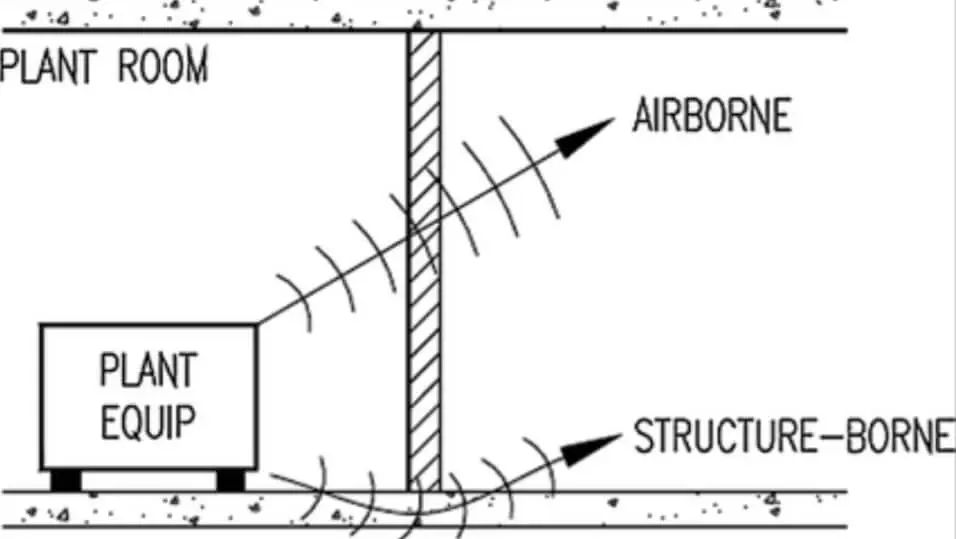Acoustic of building deals with the technique of controlling sound waves or noise to transmit from one space to another. This can be achieved by adopting various constructional techniques or application of acoustic material on surfaces.
Classification of Noise
- Indoor Noise or Structure borne Noise :- Footsteps, Conversation of people, banging of doors, structural vibrations, etc.
- Outdoor Noise or Air borne Noise :- vehicles, loud speakers, kids playing on ground, animals, railways, aeroplanes, machines at site work, etc.

Factors Affecting Acoustics of Buildings
- Site selection – site of building should be away from market area or densely populated areas to avoid origin of sound.
- Volume and shape of building – Both factors should be designed and calculated as per the location of site and purpose of building.
- Interior spaces and planning – Internal division of spaces should be as per function and purpose of building. Circulation of people should also be considered.
- Height of building – height affects the reflection and reverberation factors of acoustics.
- Function and purpose of building – whether residential, commercial, public hall, recording studio, institutional, etc.
Important Terms Related to Acoustics
- Reflection – Sound waves are reflected on surfaces and remain inside the space
- Absorption – Sound waves are totally absorbed by barrier surfaces
- Transmission- Sound wave transmit/ travel from one space to another through barriers

Construction Techniques used for Various Parts of Building
1. Wall
- It is a vertical barrier for transmission of sound
- Thickness of wall can be increased to avoid transmission
- Absorption takes place partly or fully by walls of greater thickness
- Application of cavity wall, impervious wall, damping of wall can be adopted for wall acoustics

2. Ceiling and Floors
- Horizontal barriers in acoustics
- Tamping of footsteps, movement of furniture items, etc. are sources of sound from ceiling/floors
- Acoustic can be improved by increasing thickness of ceiling slab, floating floor on resilient elements like spring, installation of hard layers and carpets on floor
3. Windows and Doors
- Sizes of window can be reduced or totally vanished to improve acoustics
- Thickness of glass used in window can be increased
- Number of window and door can be reduced depending upon the level of acoustics to be achieved
- For door, glass and wood of high density can be used to reduce transmission
4. Discountinuous Construction
- Structural barriers can be created by discontinuing or creating spaces between two adjacent internal spaces of building
- If required , resilient material can be filled between two barriers
Besides above stated techniques various acoustic materials are available in market which can be used in interior spaces as per specification of building.

Application of Higher Acoustics
Radio / Recording studio
Seminar hall /conference hall
Institutes/lecture halls
Theatres/multiplex
Assembly hall / auditorium
IT companies / small offices
Hospitals
Music rooms
These are some examples of buildings where higher sound insulation is required. Acoustical defects like sound foci, dead spot, reverberation, echo are supposed to studied in detail and architectural design should be prepared accordingly.
Advantages of Acoustic In Construction
- All acoustical factors are studied and considered right from designing process of a building
- The cost of extra acoustic material used in interior can be reduced
- More carpet area can be utilised with proper planning and designing
- In auditorium, acoustic planning results in evenly distribution of sound, seating arrangement contributes to absorption of sound, uneven thickness of wall surfaces results in reflection of sound
- Accurate sound frequency and intensity can be achieved
- Privacy of space is maintained without any disturbance
– Vrushali Pathak





